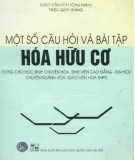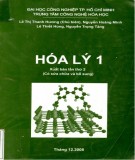
TÀI LIỆU THƯ VIỆN SỐ
- Toán học (546 )
- Vật lý (456 )
-
Hóa học
(373 )
- Sinh học (280 )
- Văn học (620 )
- Lịch sử (332 )
- Địa Lý - Thiên văn (306 )
- Ngoại ngữ (301 )
- Mỹ thuật - Hội họa (250 )
- Âm nhạc (355 )
- Thể dục (459 )
- Quản lý Giáo dục (453 )
- Tâm lý - Giáo dục (468 )
- Sư phạm Tiểu học (519 )
- Sư phạm Mầm non (608 )
- Kinh tế - Ngân Hàng (621 )
- Quản trị KD - Du lịch (533 )
- Công nghiệp (339 )
- Điện - Điện tử (681 )
- Công nghệ thông tin (921 )
- Thông tin - Thư viện (495 )
- Văn hóa - Nghệ thuật (305 )
- Khoa học thường thức (192 )
- Chính trị - Xã hội (393 )
- Nông nghiệp (777 )
- Luận văn (483 )
- Luận án tiến sĩ (121 )
Danh mục TaiLieu.VN
- Mẫu Slide Powerpoint
- Luận Văn - Báo Cáo (344720)
- Kinh Doanh Marketing (65512)
- Kinh Tế - Quản Lý (48934)
- Tài Chính - Ngân Hàng (55898)
- Công Nghệ Thông Tin (142209)
- Tiếng Anh - Ngoại Ngữ (47066)
- Kỹ Thuật - Công Nghệ (134345)
- Khoa Học Tự Nhiên (107174)
- Khoa Học Xã Hội (82451)
- Văn Hoá - Nghệ Thuật (54408)
- Y Tế - Sức Khoẻ (173915)
- Nông - Lâm - Ngư (62504)
- Kỹ Năng Mềm (29016)
- Biểu Mẫu - Văn Bản (27610)
- Giải Trí - Thư Giãn (51994)
- Văn Bản Luật (198854)
- Tài Liệu Phổ Thông (402015)
- Trắc Nghiệm Online (213578)
- Trắc Nghiệm MBTI
- Trắc Nghiệm Holland
Tài liệu nổi bật
Kết quả 61-72 trong khoảng 373
-
Lecture Organic chemistry: Chapter 5 - L. G. Wade, Jr.
In this chapter, we study the three-dimensional structures of molecules to understand their stereochemical relationships. We compare the various types of stereoisomers and study ways to differentiate among stereoisomers. In future chapters, we will see how stereochemistry plays a major role in the properties and reactions of organic compounds.
48 p dnulib 27/06/2019 243 1
-
Lecture Organic chemistry: Chapter 11 - L. G. Wade, Jr.
Chapter 11 - Reactions of Alcohols. Alcohols are important organic compounds because the hydroxyl group is easily converted to almost any other functional group. In Chapter 10, we studied reactions that form alcohols. In this chapter, we seek to understand how alcohols react and which reagents are best for converting them to other kinds of compounds.
53 p dnulib 27/06/2019 256 1
-
Lecture Organic chemistry: Chapter 15 - L. G. Wade, Jr.
Chapter 15 - Conjugated systems, orbital symmetry, and ultraviolet spectroscopy. In this chapter, we consider the unique properties of conjugated systems, the theoretical reasons for this extra stability, and some of the characteristic reactions of molecules containing conjugated double bonds. We also study ultraviolet spectroscopy, a tool for determining the structures of conjugated systems.
56 p dnulib 27/06/2019 142 1
-
Lecture Organic chemistry: Chapter 16 - L. G. Wade, Jr.
Chapter 16 introduce to aromatic compounds. This chapter determine whether Hückel’s rule applies to a given structure, and predict whether the compound will be aromatic, antiaromatic, or nonaromatic; show how to construct the molecular orbitals of a conjugated cyclic system similar to benzene and cyclobutadiene;...
59 p dnulib 27/06/2019 167 1
-
Lecture Organic chemistry: Chapter 17 - L. G. Wade, Jr.
Chapter 17 - Reactions of aromatic compounds. In this chapter, we will study several of these reactions and then consider how substituents on the ring influence its reactivity toward electrophilic aromatic substitution and the regiochemistry seen in the products. We will also study other reactions of aromatic compounds, including nucleophilic aromatic substitution, addition reactions, reactions of side chains, and special reactions of phenols.
70 p dnulib 27/06/2019 176 1
-
Lecture Organic chemistry: Chapter 13 - L. G. Wade, Jr.
Chapter 13 - Nuclear magnetic resonance spectroscopy. In this chapter, students will be able to understand: Use the chemical shifts, splitting patterns, and integrations shown in a proton NMR spectrum to propose structures for possible compounds; use the number of peaks and their chemical shifts in a 13C NMR spectrum to determine the number of types of carbon atoms in the compound and what functional groups they might represent;...
71 p dnulib 27/06/2019 212 1
-
Lecture Organic chemistry: Chapter 12 - L. G. Wade, Jr.
Chapter 12 - Infrared spectroscopy and mass spectrometry. This chapter identify the reliable characteristic absorptions in an infrared spectrum, and propose which functional groups are likely to be present in the molecule; explain which functional groups cannot be present in a molecule because their characteristic peaks are absent from the IR spectrum; use a mass spectrum to determine a compound’s molecular weight, and propose which elements...
54 p dnulib 27/06/2019 159 1
-
Lecture Organic chemistry: Chapter 14 - L. G. Wade, Jr.
Chapter 14 introduce to ethers, epoxides, and sulfides. After completing this chapter, students will be able to: Draw and name ethers and heterocyclic ethers, including epoxides; explain the trends in their boiling points, solubilities, and solvent properties; determine the structures of ethers from their spectra, and explain their characteristic absorptions and fragmentations;...
46 p dnulib 27/06/2019 281 1
-
Lecture Organic chemistry: Chapter 18 - L. G. Wade, Jr.
Chapter 18 introduce to Ketones and Aldehydes. After completing this chapter, students will be able to: Draw and name ketones and aldehydes, and use spectral information to determine their structures; propose single-step and multistep syntheses of ketones and aldehydes from compounds containing other functional groups; predict the products and propose mechanisms for the reactions of ketones and aldehydes with oxidizing and reducing agents,...
67 p dnulib 27/06/2019 260 1
-
Lecture Organic chemistry: Chapter 19 - L. G. Wade, Jr.
Amines are organic derivatives of ammonia with one or more alkyl or aryl groups bonded to the nitrogen atom. As a class, amines include some of the most important biological compounds. Amines serve many functions in living organisms, such as bioregulation, neurotransmission, and defense against predators. This chapter draw and name amines, and use spectral information to determine their structures; compare the basicity of amines with other...
86 p dnulib 27/06/2019 252 1
-
Lecture Organic chemistry: Chapter 21 (part 2) - L. G. Wade, Jr.
Chapter 21 (part 1) - Reactions of carboxylic acid derivatives. This chapter predict the products and propose mechanisms for the reactions of carboxylic acid derivatives with reducing agents, alcohols, amines, and organometallic reagents; propose multistep syntheses using acid derivatives as starting materials and intermediates.
53 p dnulib 27/06/2019 272 1
-
Lecture Organic chemistry: Chapter 22 - L. G. Wade, Jr.
Chapter 22 - Condensations and alpha substitutions of carbonyl compounds. In this chapter, we consider two more types of reactions: substitution at the carbon atom next to the carbonyl group (called alpha substitution) and carbonyl condensations. Carbonyl condensations are among the most common biological methods for building up and breaking down large molecules.
71 p dnulib 27/06/2019 271 1
Đăng nhập
BỘ SƯU TẬP NỔI BẬT





























